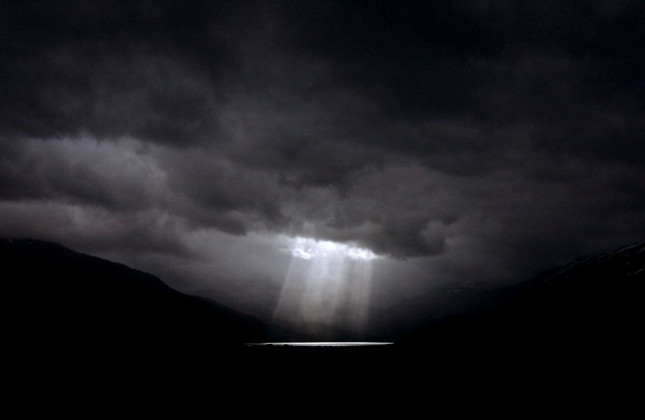Neutron stars are few kilometres sized objects that come to life when a massive star dies in a devastating supernova explosion. A few months ago a very peculiar neutron star has been discovered in an even more peculiar location of our Galaxy. A magnetar is neutron star surrounded by a magnetic field so intense that it is billion of times stronger than the strongest magnetic field ever produced in a physics lab on Earth. Place yourself in such a strong magnetic field and you won’t survive a whole second.One such magnetar has been discovered in the Galactic Center, very close to the supermassive black hole that exists there. This monster has a mass that is several million times larger than that of our Sun and is slowly eating a tenuous cloud of gas that fills its environment. The magnetar is so close to the monster that it orbits around it, like the Earth around the Sun.
In an interesting paper posted today on arXiv (submitted to the Astrophysical Journal Letters), a team of scientists lead by Laura G. Spitler (from the Max Planck Insitute for Radio Astronomy, Bonn) used the magnetar to probe the cloud of gas around the supermassive black hole. By using radio waves emitted by the magnetar and detected by radio-telescopes on Earth, they measured how the signal is scattered and degraded when crossing the cloud of material that surrounds the monster. They found that the interstellar material is rather tenuous, an interesting result per-se, which however also hides a surprising conundrum.
Indeed if the cloud around the black hole is tenuous, then the radio signal emitted by other neutron stars should not degrade too much when crossing it before reaching the Earth. Therefore it should be possible to detect many other neutron stars around the supermassive black hole, would some more be present around there. And theoretical model do predict that many others should be there…
But hey! Astronomers have been searching for such neutron star around the monster for a long time and guess what? Only this magnetar has popped-up and nothing else. So there are not many other neutron stars around there, right? Wrong! Magnetars are very rare types of neutron stars, so the odds are strongly against detecting a single neutron star around the monster with that neutron star being also a magnetar! Laura Spitler and colleagues indeed notice that for each magnetar detected there should be a hidden population of many more neutron stars there. The reason why we haven’t seen any other neutron star in previous radio searches is probably associated to the fact that the cloud is very inhomogeneous and patchy and we happened to see the magnetar shining through a hole in the cloud.
If we would find one more neutron star even closer to the monster, especially one of the so-called millisecond pulsar family, then we would have an amazing tool to understand gravity and test the theory of General Relativity that we can only dream of. Now Laura Spitler & co-authors have shown us that many other neutron stars might be silently lurking in the darkness around the monster and one of them might just be waiting to be discovered though another hole in the cloud…
Alessandro Patruno is a researcher at the Leiden University working in the field of compact objects (neutron stars, black holes and white dwarfs) and high energy astrophysics. In his blog Astrosplash Alessandro discusses news in his research field and posts updates on his work.
